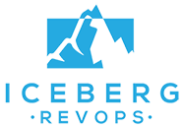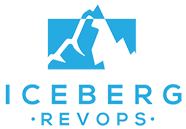- What is Product-Led Sales (PLS)?
- Why the Best Sales Teams are Excited about Product-Led Sales
- How to Kick-Start Your PLS Motion: a 4-Point Action Plan
- 1. Get Cross-Team Buy-In
- 2. Define Your PQLs & PQAs
- 3. Build your PLS Tech Stack
- 4. Automate as Much as Possible
- Success with PLS
- FAQs
- Next Steps to Skyrocketing Your PLG Motion
As the lead volume in your PLG motion grows, it becomes too easy to let high contract value deals slip through the cracks.
That’s where product-led sales steps in.
Equipping your sales team with product data that they don’t usually have access to and pairing it with automated sales plays boosts productivity, effectiveness, and your revenue.
Instead of cold outreach, they’re having conversations with someone who’s already using your product (a much easier sell). Instead of shuffling through a mountain of leads, they get pinged on Slack to reach out to a specific user. Instead of spending time talking to sales when they don’t need to, the right users will get automatically funneled to automated sales plays and upgrade by themselves.
But you don’t get there overnight.
Layering on PLS to your PLG motion requires planning and rethinking your funnel, but our 4-point action plan will get you started.
What is Product-Led Sales (PLS)?
Product-led sales (PLS) is a go-to-market strategy that puts product data into the hands of a sales team to maximize revenue opportunities. As Salespanel describes it, “PLS is simply a sales approach that adopts the core principles of PLG and applies them to the sales process.”
In a traditional sales-led funnel, marketing and sales teams use data from inbound and/or outbound efforts to nurture leads. In PLS, product usage data drives how marketing and sales support revenue growth. PLS requires a shift in the when, where, and how of data capture and sharing among revenue teams.
Why the Best Sales Teams are Excited about Product-Led Sales
Sales isn’t dead with product-led growth, but it is changing. There are plenty of customers who will self-serve throughout your freemium or free trial funnel, but what about those who:
- Are struggling to get value from the product on their own?
- Are qualified leads, but aren’t upgrading their plan?
- Represent an enterprise-level purchase opportunity?
These are all situations when the sales team of a PLG company would step in.
The best sales teams are excited about the opportunities that product-led sales has to offer because they get to talk to leads who are already using their product. You’ll still want to target the right people because not all users have buying power, but PLG gets your foot in the door.
It also means sales spends less time researching and doing manual outreach so they’re able to focus on what you’re paying them for: selling.
How to Kick-Start Your PLS Motion: a 4-Point Action Plan
Putting product data into the hands of your Sales team isn’t easy, though. Neither is defining crucial PLG metrics like Product-Qualified Leads (PQLs). Making any Product-led Sales motion a success means rethinking your entire funnel and its associated metrics.
If you’re just starting out, here’s the best way to move forward.
1. Get Cross-Team Buy-In
You’ll need cross-functional participation for teams to adopt the new approach.
Aim for a simple strategy that outlines how sales will operate within a PLG framework. This will drive downstream decisions, like how sales will use product data shared by the engineering team.
Sales needs to add significant incremental value. This doesn’t include talking to prospects that were going to buy anyway, tagging them, and calling them sales-assisted.

“When I joined DocSend, I immediately stopped giving sales reps credit for monthly deals (minimum annual contract) and anything below $1k. This changed how reps thought about their job. Some reps quit shortly thereafter because their job got harder. But if sales is that easy, do you need a sales team?” –
Taft Love
Founder, Iceberg Ops
2. Define Your PQLs & PQAs
In PLS, the product plays a leading role in supporting the customer relationship. Because of this, the two most common metrics in a PLS funnel are the product-qualified lead and product-qualified account.
Product-qualified lead (PQL): A user who signs up for a product’s free or freemium path, uses it regularly, and has buying power.
Product-qualified account (PQA): This metric gauges interest at the company-level instead of user level. It may represent usage level, breadth of feature usage, the velocity of usage (i.e. big influx of new users) and behavior components.
Defining a PQL is obviously a big deal. Who’s responsible for it?
Cross-functional participation wins the day. To encourage total buy-in, product, marketing, and sales should all take part in defining your organization’s PQL/PQAs.
To determine your company’s ideal PQL threshold, start by looking at the behaviors of your existing customer base, orr at least a subset of your customer base that represents the strategy you’ve chosen for PLS.
-
Which users converted?
-
Which users show additional revenue potential?
-
Which users initiated contact with sales or support?
-
What do they all have in common?
At Iceberg, we’ve learned a plug-and-play PQL definition does not exist.
For most companies, there are too many variables for anyone without a data science background to properly analyze. A PQL should distill variables into one meaningful concept for the sales team to take action.
3. Build your PLS Tech Stack
The magic of a product-led sales strategy happens at the top of the funnel.
Done right, PLS sparks meaningful conversations earlier in the sales cycle. Customers have already used the product. In a sense, the product itself nurtures the leads.
With warmer leads, sales reps should spend more time working those opportunities than plodding through labor-intensive research associated with the standard sales-led qualifying process.
The sales team needs an easy way to understand when and how to engage customers already using a product. A PLS tech stack should have tools in place that capture behavioral data from a product and prescribe next steps for the sales team.
“How do I connect product data to my MAP and CRM?”
You have two options: build a solution in-house or invest in tools designed exclusively for marketing and sales teams at PLG companies.
We tend to steer our clients away from custom builds (even though it would mean a lot of money for us). It’s not the best use of your engineers’ time, especially when great extract/load/transform (ELT) tools like Hightouch and Census are able to transfer data to a system where sales and marketing will use it.
4. Automate as Much as Possible
PLS is most powerful when automation replaces manual tasks for your sales team.
The automations you choose will depend on your sales method. For example, in high-velocity sales with relatively small deal sizes, sending automated messages from sales reps to new trial users makes sense. However, this approach probably isn’t ideal if your sales team focuses on high-touch enterprise deals that start with organic users.
Automations to consider:
-
Enroll new PQLs in an email sequence relevant to the prospect’s role or vertical
-
Surface data about a PQL or PQA to a sales rep at the time they reach the qualification threshold. This could be a simple Slack message with information about the company or person.
-
Leverage a research tool (e.g. Truly sales bot) to automatically research decision makers at a large company where more than x leads became PQLs in y days.
You can create automations in a PLS tool like Groundswell.


“Instead of creating a task telling a sales rep to do a certain thing, the software or workflow you use can just do it on their behalf.”
Brendan Short
Co-founder & CEO, Groundswell
Success with PLS
Given such compelling revenue opportunities, it’s safe to assume PLG will continue to dominate other go-to-market strategies in B2B SaaS.
Adding a sales team on top of an existing product-led strategy offers the best of both sales-led and product-led worlds. The product shoulders the burden of nurturing leads while sales focuses on opportunities with increased revenue potential.
To recap, the success of a PLS strategy depends on:
- Understanding the purchase triggers of customers in your product
- The quality of your lead scores
- The ease with which your sales team can access and interpret customer data, including follow-up steps automated on their behalf
Defining PQLs, tech stack integration, and PLS strategy is something we help our clients with everyday. If you’d like our help, reach out and let us know about your current GTM systems.
FAQs
How do you define a PQL?
To define the perfect PQL threshold for your company you first need to analyze your data to find out what actions users took before becoming paid users and identify the trends. There are far too many variables to make this a simple task which is why many PLG teams choose to partner with a vendor who can comb through all your data to give you a reliable scoring system.
What are the main benefits of PLG?
PLG’s main benefits include:
– A lower customer acquisition cost (CAC) on average
– A more efficient sales team. Using product data helps your sales team better target accounts and users who can benefit from a sales-assisted upgrade as well as funnel users to automated sales plays
– Shorter sales cycles: typically because users can understand how to use the product, get value from it, and upgrade without the intervention of sales
Find out more about the benefits of PLG.
Next Steps to Skyrocketing Your PLG Motion

Reach out to Iceberg
We can help set up your GTM systems and make sure your PLG motion hits the ground running.

Learn More About Our Services
We offer full-funnel RevOps services to early-stage B2B startups. Flat rate pricing for $8,000/month.



